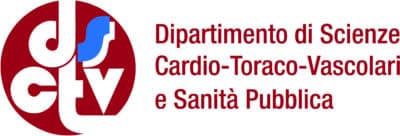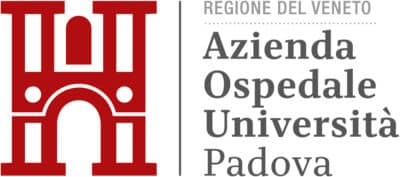

The Master in Arrhythmology and Electrophysiology in Paediatric and Adult Congenital Patients delves into the knowledge of congenital, acquired and genetic arrhythmic diseases, and the latest diagnostic and treatment techniques for their diagnosis and treatment.
Through an electrocardiographic, physiopathological and electrophysiological approach, the course analyses all arrhythmic diseases from the gestational age to adults with congenital heart disease, and sets the foundations for their diagnosis.
It also covers all diagnostic techniques for risk stratification, and the possible pharmacological and non-pharmacological treatment strategies. Lastly, it explores how to manage arrhythmic urgencies from the gestational age to adults with congenital heart disease.
The Master in Arrhythmology and Electrophysiology in Paediatric and Adult Congenital Patient trains professional figures with advances skills, who are familiar with and recognize the different arrhythmic situations in paediatric and adult congenital patients, and who can analyse the context within its anatomical and physiopathological complexity, while understanding commonly employed scientific and technical language.
Students learn how to recognize individual clinical and physiopathological situations, in order to identify the proper treatment strategy, and manage patients independently. Also, they will learn how to coordinate with the other professional figures working at the hospital, to come up with synergistic intervention processes and elaborate on and process arrhythmic clinical cases.
Lastly, the Master in Arrhythmology and Electrophysiology in Paediatric and Adult Congenital Patient teaches students how to communicate in a clear, articulated way, with the correct technical-scientific terms with field specialists (electrophysiologists, paediatricians, paediatric cardiologist, cardiosurgeon).
The Master in Arrhythmology and Electrophysiology in Paediatric and Adult Congenital Patient is addressed to cardiologists, paediatricians and anaesthesiologists, and the knowledge acquired will help them gain the proper skills to recognize and manage arrhythmia in paediatric and adult patients with congenital cardiac disease at clinical, intervention and urgency level.
Following clinical training, the professional figures, such as paediatric cardiologists, adult cardiologists, anaesthesiologists, neonatologists, emergency medicine doctors, sports doctors will recognize and manage cardiac arrhythmia in paediatric and in adult congenital patients independently, will manage arrhythmia emergencies relating to these aspects, and also intervention electrophysiology to treat those pathologies, based on scientific evidence.
The Master in Arrhythmology and Electrophysiology in Paediatric and Adult Congenital Patient includes 10 modules:
ANATOMY OF THE CONDUCTION SYSTEM IN PAEDIATRIC AND CONGENITAL HEART DISEASE PATIENTS
Anatomy and physiopathology; cardiac embryology and conduction system; classification, anatomy and morphology in a normal heart and in the main congenital cardiopathies.
ELECTROCARDIOGRAPHY IN PAEDIATRIC AND CONGENITAL HEART DISEASE PATIENTS
Heart rhythm evaluation in the foetus, in the neonatal ECG, and during growth.
Electrocardiographic characteristics of congenital heart diseases.
DIAGNOSIS AND CLINICAL MANAGEMENT – INTERVENTIONS ON BRADYARRHYTHMIAS
Bradycardia electrocardiographic definition in the different age brackets.
ECG: atrioventricular blocks, asistolias, junctional rhythms.
Bradyarrhythmia causes in a healthy heart.
Electrophysiology of AV block and bradycardia.
Bradyarrhythmia-predisposing congenital heart disease; bradycardia and post-surgery blocks.
Pacemakers in children with congenital and post-surgery block and in patients with congenital heart disease.
ELECTROCARDIOGRAPHIC AND ELECTROPHYSIOLOGICAL DIAGNOSIS AND CLINICAL-INTERVENTIONAL MANAGEMENT OF SUPRAVENTRICULAR TACHYCARDIA
Supraventricular tachycardia (TSV) in the different age brackets.
ECG of WPW, TA, Flutter, JET and in TSV.
Electrophysiology and age-related distribution.
Palpitations in children and teenagers.
WPW syndrome.
Nodal atrio-ventricular re-entry TSV.
Atrial flutter.
ECG and management of atrial tachycardia.
Congenital and post-surgery JET.
TSV in adult patient with congenital heart disease and in post-surgery for congenital heart disease patients.
ELECTROCARDIOGRAPHIC AND ELECTROPHYSIOLOGICAL DIAGNOSIS AND CLINICAL-INTERVENTIONAL MANAGEMENT OF VENTRICULAR TACHYCARDIA
Ventricular tachycardia (TV).
Electrophysiology of TV, prevalence in the different age brackets.
Ventricular extrasystolia and TV in children and adolescents.
Idiopathic TV.
Causes of TV in adult patient with congenital heart disease and in post-surgery for congenital heart disease patients.
CATHETER ABLATION IN CHILDREN AND IN ADULT CONGENITAL HEART DISEASE PATIENTS
Indication for TSV, TV and BEV, electroanatomical techniques and mapping systems.
ELECTROCARDIOGRAPHIC AND ELECTROPHYSIOLOGICAL DIAGNOSIS, RISK STRATIFICATION, AND CLINICAL MANAGEMENT OF ARRHYTHMIA IN THE MOST COMMON PAEDIATRIC CHANNELOPATHIES
Long QT syndrome.
Brugada syndrome.
Short QT syndrome.
Cathecolaminergic polymorph tachycardia.
ELECTROCARDIOGRAPHIC AND ELECTROPHYSIOLOGICAL DIAGNOSIS, RISK STRATIFICATION, AND CLINICAL MANAGEMENT OF ARRHYTHMIA IN THE MOST COMMON PAEDIATRIC CARDIOMYOPATHIES
Hypertrophic cardiomyopathy.
Arrhythmogenic right ventricular dysplasia (ARVD) or cardiomyopathy.
Dilated cardiomyopathy.
Myocarditis.
PREVENTION OF SUDDEN DEATH IN PAEDIATRIC AND ADULT PATIENTS WITH CONGENITAL HEART DISEASE
Indications for ICD implantation in children and in patients with congenital heart disease.
Technologies and techniques.
Indications on the use of CRT.
ARRHYTHMIA EMERGENCIES
Management of hyperkinetic and hypokinetic arrhythmia emergencies from new-borns to adult patients with congenital heart disease.
The general ranking of merit for the academic year 2025/26 will be published on the Italian page of this Master according to the timing provided in the Call.
Information
FAQ
Students have a mandatory attendance of one year, including lessons, periodic seminars and an internship.
Their learning skills are tested with a written mid-year exam, useful to highlight any deficiencies that may be bridged over the rest of the year.
The Master is held in twelve months, and is articulated in lessons and in an internship, during which students will have access to the electrophysiology hall and to the paediatric and congenital heart disease patient electrophysiology clinic.
Attendance is mandatory, and the dates of the lessons will be communicated once a month. Attendance is taken with the students’ signature. The internship period will be agreed on an individual basis. At the end of the course, the students’ satisfaction will be surveyed.
During the internship, students will attend the paediatric and congenital heart disease patient electrophysiology clinic, paediatric meetings and GUCh, where the arrhythmia cases are discussed, and the electrophysiology lab to consolidate the notions learned on the different arrhythmia conditions, and learn how to perform intervention electrophysiology procedures.
The internship period will be agreed on an individual basis.
The course has a mandatory attendance of at least 70% of the activities.

